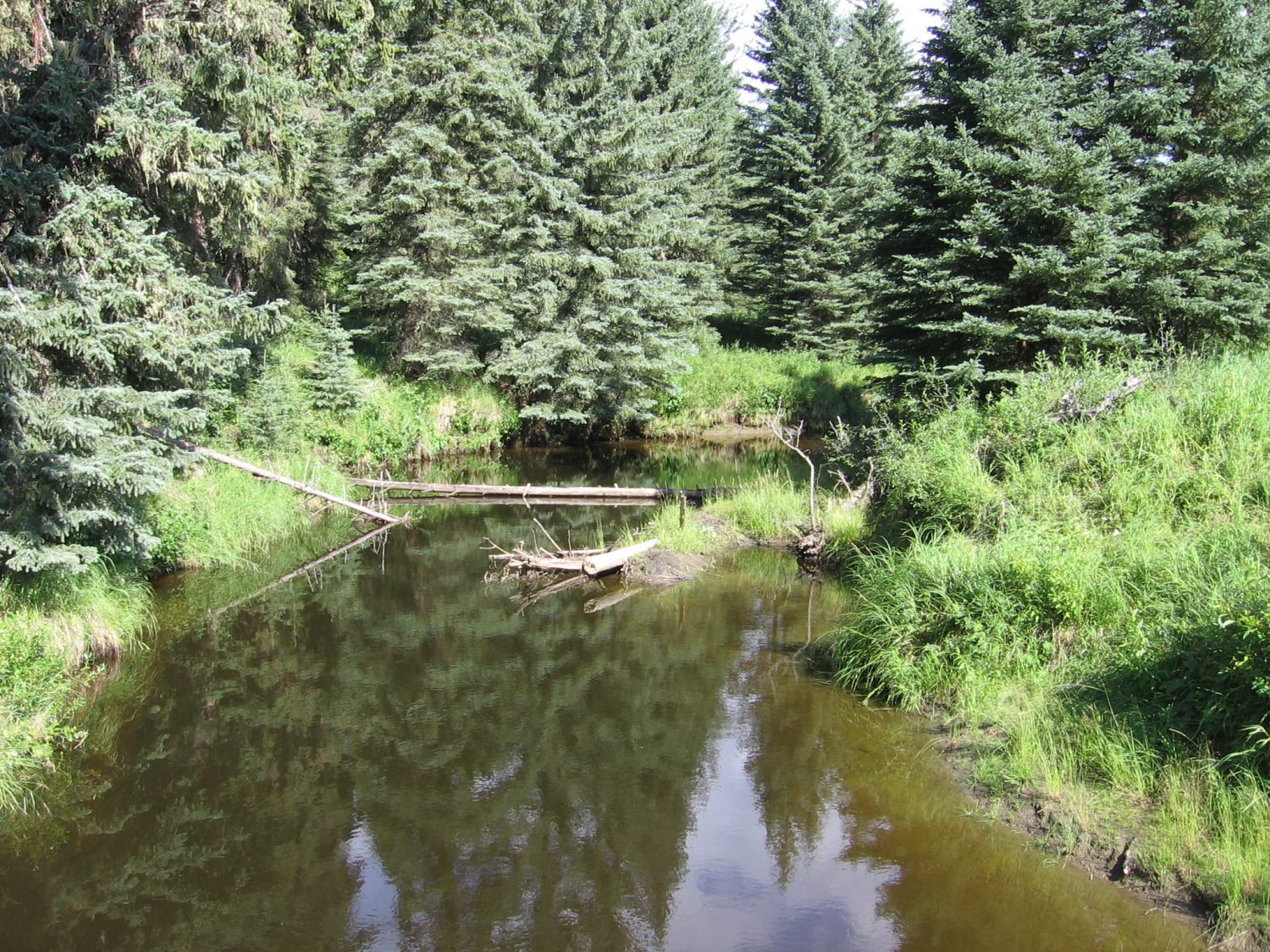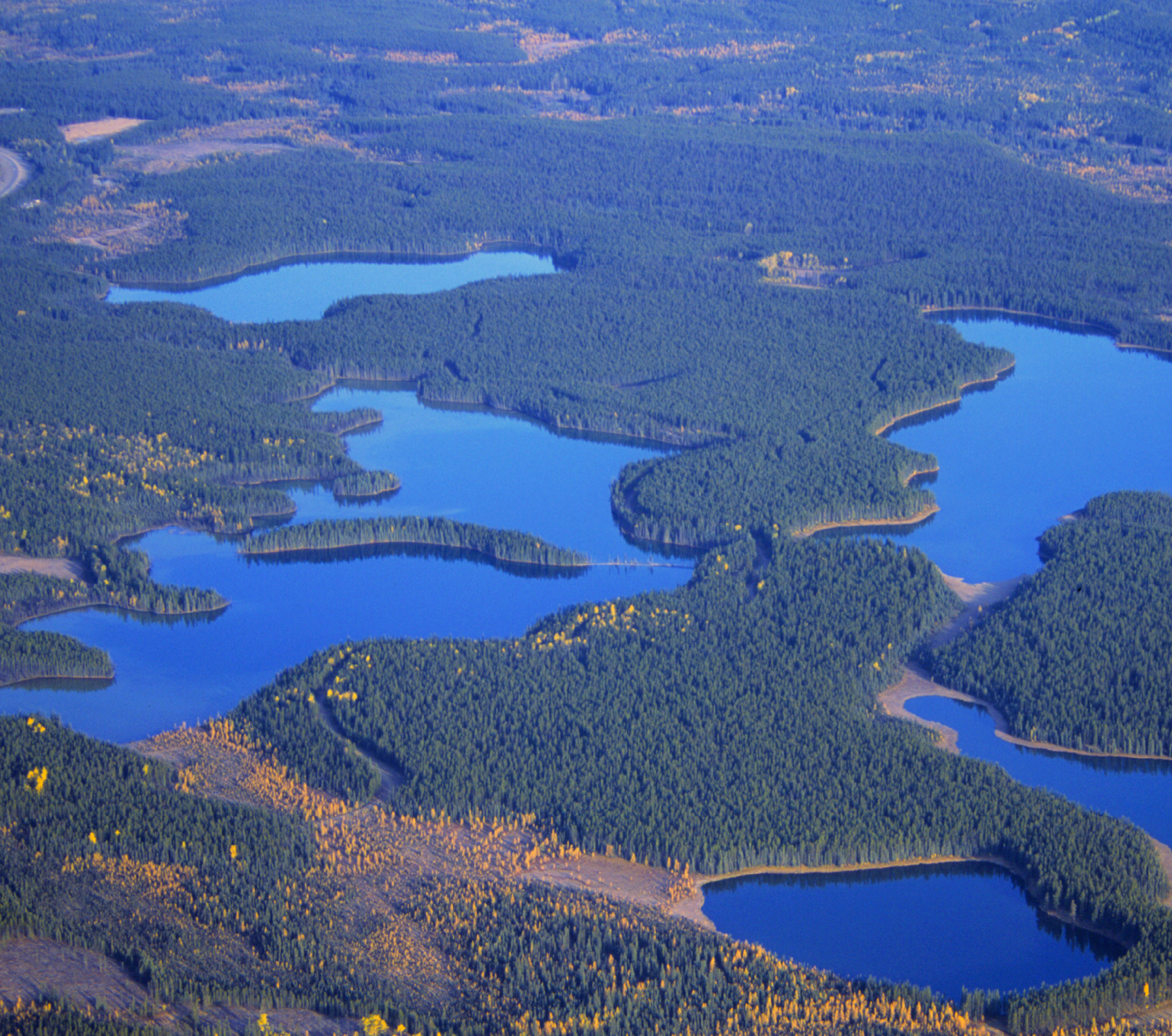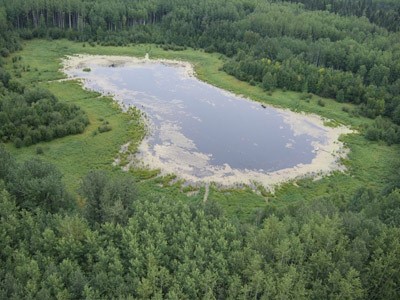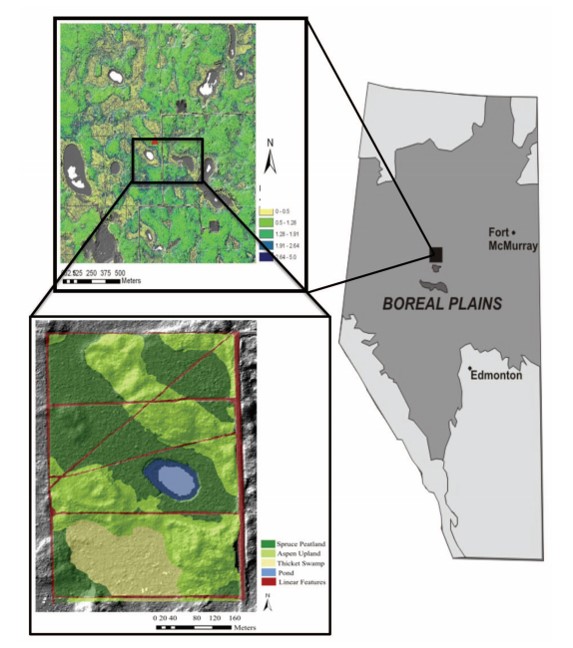Overview
Forests are shaped by water. The types of forests found in the western boreal region depends on the water that enters, is stored and moves around this vast ecosystem. Were this to change, the western boreal forest would change with it, perhaps in ways that would be catastrophic to the forest industry. The HEAD project compiled research done in north-central Alberta since the 1990s to track forest water connectivity. It found that natural and human disturbances can change water flows, this is heightened by droughts caused by climate change and it can be mitigated through careful disturbance management.

Photo credit: West Fraser
Background
How natural is the natural range of variation? A premise of EBM is that we know how variable ecosystems are over time so that we can manage them to fit within this range. Climate change challenges this notion as ecosystems adapt to conditions beyond this NRV. In an era of climate change, can we consider that modern NRV is accurately reflected by patterns that existed 150 years ago?
The HEAD project asked this question using forest hydrology as a model. Water is a key driver of ecological processes in the western boreal forest. The HEAD project focused on how connections among water bodies change in response to disturbances like fire, forestry and climate change. By compiling studies conducted since the 1990’s in a well studied lake system in north-central Alberta, Dr. Kevin Devito and colleagues measured forest adaptations to moisture variation and how waterbodies connect above- and below-ground over time.
Their goal was to first understand water connectivity in this large, but well-studied region. Next, they compared their measures with what must have occurred in the past as well as how connections change in response to disturbances; forestry, fire, climate change. Finally, they created a suite of modeling tools to help industry and government foresters plan harvests that will manage groundwater resources in ways that mitigate long-term risk but retain variation within the natural range. Work continues at this site at the Utikuma Region in North-Central Alberta with research identifying how disturbances will affect peatland resiliency

Photo credit: fRI Research
Innovation
The HEAD program was not directly focused on ecosystem based management. But this doesn’t mean it isn’t relevant to EBM. Understanding ecosystems does not always happen with vast studies or models, but often by aggregating knowledge from many, focused studies. This was the approach that HEAD took. It also accounted for shifting natural ranges of variation resulting from climate change and it produced practical tools for managers to determine how much water networks would be affected by activities proposed. HEAD wasn’t the complete EBM package, but it was a big, innovative step for EBM in boreal forest hydrology.
Discovery
Their measurements have shown that rain and snowfall in the western boreal is quite variable but is generally in a state of water deficit. Indeed, the water deficit tended to overwhelm changes caused by resource extraction. But they found interesting patterns across the landscape. For instance, because aspen grows so quickly after harvest, its post-cut hydrology changed little. Road design, compaction and topography can change water flow patterns. Although climate change coarsely filters hydrological effects of forestry, cumulative effects are very evident— harvest design can exacerbate, or mitigate, climate variation effects on forest waters. In her recent thesis at the University of Lethbridge, Emily Jones, finds that the interaction of variable rainfall, more frequent wildfire can lead to vegetation community change on peatlands.
Jones, E. 2021. No wildfire return intervals: impacts of diminishing fire return intervals on boreal peatlands using combined field/Lidar approaches. University of Lethbridge, Lethbridge, AB., Canada.
Where in the wheel?
EBM asks that we pay attention to all ecosystem elements as we manage specific values. Water is perhaps paramount among those elements. In an EBM planning environment, hydrology, together with and as part of biodiversity, would be considered before harvest was planned. Hence, planners need tools to ensure that hydrology targets set are being met when harvests are designed. The HEAD project achieved this for the mixedwood stands in the western boreal region.



